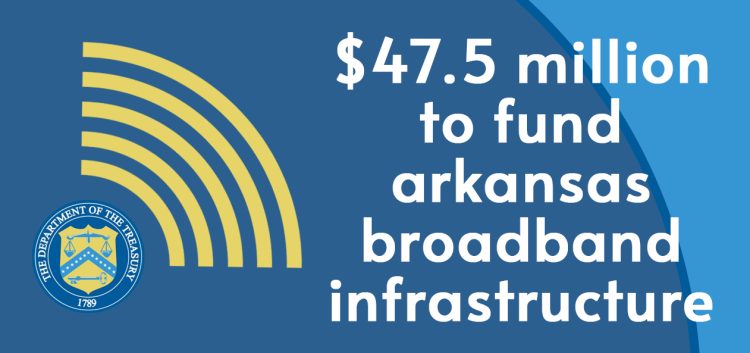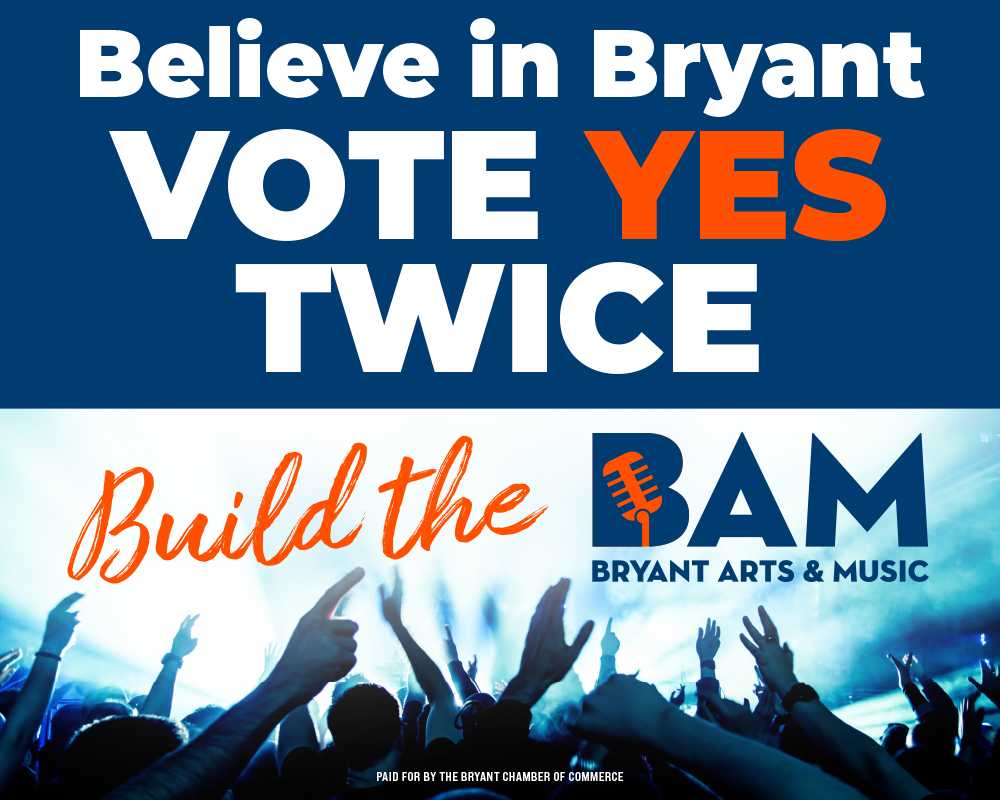On Tuesday, August 30, the U.S. Department of the Treasury announced the approval of an additional group of five states under the American Rescue Plan’s Coronavirus Capital Projects Fund (CPF): Connecticut, Indiana, Nebraska, North Dakota, and Arkansas.
The State of Arkansas, approved for $47.5 million, estimates it will connect 5,500 homes and businesses by building high-speed internet service in rural and remote areas lacking reliable internet connections.
The Arkansas Rural Connect (ARC) grant program is a competitive grant program designed to fund broadband infrastructure projects in locations throughout Arkansas without reliable internet of at least 100/20 Mbps. Areas in Arkansas eligible for CPF funding through this program are generally less densely populated, more rural and have higher numbers of socioeconomically disadvantaged residents. CPF investments will support the state’s goal of closing the digital divide.
Governor Asa Hutchinson expressed his support for the approval of funding: “I appreciate the Treasury Department’s approval of this funding as we continue our work toward expanding broadband access in Arkansas,” Governor Hutchinson said. “Ensuring access to high-speed internet presents a challenge in rural states, and this funding will provide us an opportunity to build on the work we’ve already done through the Arkansas Rural Connect Program.”
This funding will be disbursed through the Arkansas Rural Connect Program and will be subject to legislative appropriation for identified projects.
The CPF provides $10 billion to states, territories, freely associated states, and Tribal governments to fund critical capital projects that enable work, education, and health monitoring in response to the public health emergency. A key priority of the program is to make funding available for reliable, affordable broadband infrastructure and other digital connectivity technology projects, furthering President Biden’s goal for every American to have access to reliable, affordable high-speed internet. In addition to the $10 billion provided by the CPF, many governments are using a portion of their State and Local Fiscal Recovery Funds (SLFRF) toward meeting the Biden-Harris Administration’s goal of connecting every American household to affordable, reliable high-speed internet. Together, these two American Rescue Plan programs and the Bipartisan Infrastructure Law are working in tandem to close the digital divide – deploying high-speed interest to those without access today and lowering costs for those who cannot afford it.
“The pandemic upended life as we knew it—from work to school to connecting with friends and family—and exposed the stark inequity in access to affordable and reliable high-speed internet in communities across the country, but especially in rural, Tribal, and low-income communities,” said Deputy Secretary Wally Adeyemo. “This funding will lay the foundation for the Biden-Harris Administration’s historic investments to increase access to high-speed internet and reduce broadband bills for American households and businesses.”
The state plans approved in this group will support broadband infrastructure and are designed, upon project completion, to deliver reliable internet service that meets or exceeds symmetrical download and upload speeds of 100 megabits per second (Mbps), speeds that are needed for a household with multiple users to simultaneously access the internet to telework and access education and health monitoring. Treasury designed its guidance to prioritize connecting families and business with poor and inadequate service—particularly those in rural and remote areas. Treasury also requires states to explain why communities they have identified to be served with funds from the CPF have a critical need for those projects.
In accordance with Treasury’s guidance, each state’s plan requires service providers to participate in the Federal Communications Commission’s (FCC) new Affordable Connectivity Program (ACP). The ACP helps ensure that households can afford the high-speed internet they need for work, school, healthcare, and more by providing a discount of up to $30 per month (or up to $75 per eligible household on Tribal lands). The FCC estimates that about 48 million families are eligible for the program—nearly 40% of households. President Biden and Vice President Harris recently announced the administration had secured commitments from 20 leading internet service providers—covering more than 80% of the U.S. population—to offer all ACP-eligible households high-speed, high-quality internet plans for no more than $30 per month. As a result, these households will receive internet access at no cost, helping to close the digital divide for millions of Americans who could not previously have afforded internet service. Beyond the ACP, Treasury’s guidance requires recipients to consider whether the federally funded networks will be affordable to the target markets in their service area and encourages recipients to require that a federally funded project offer at least one low-cost option at speeds that are sufficient for a household with multiple users.
Treasury announced the first two rounds of state awards in June and July and will continue approving state and Tribal plans on a rolling basis.





